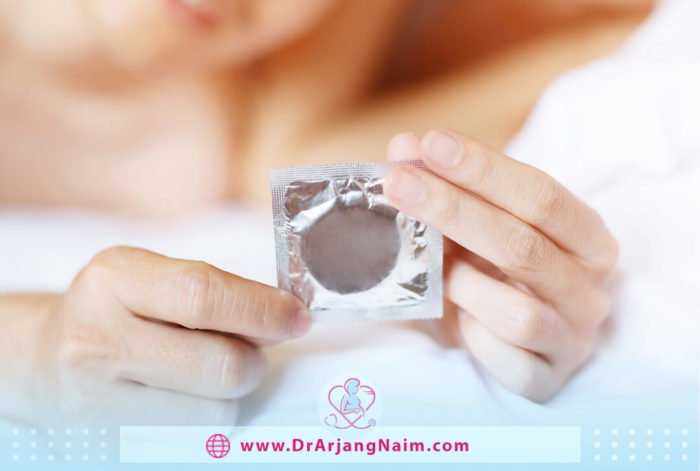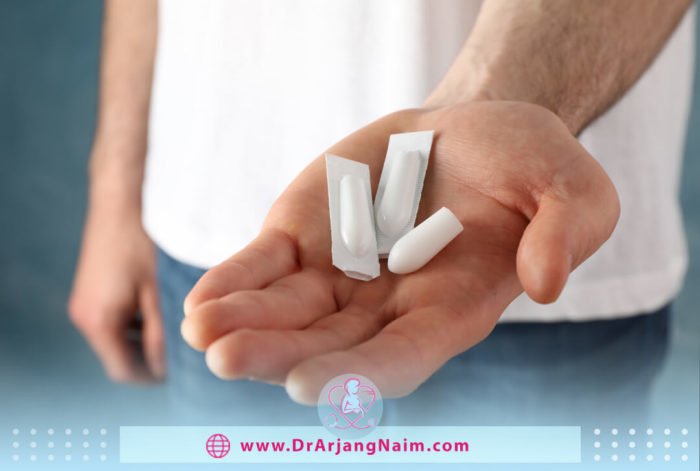Vaginal Yeast infection is a fungal infection that causes severe burning, discharge, and itching of the vagina and labia, the tissues that line the vaginal opening.
It is also called vaginal candidiasis. Vaginal Yeast infections affect 3 out of 4 women at some point in their lives, and many women experience this problem at least twice. Vaginal candidiasis is not considered a sexually transmitted infection, but there is usually a risk of developing a Yeast infection during the first sexual activity. There is also evidence that infections may be related to oral contact with the genital area (oral-genital sex).
Symptoms
Symptoms of Vaginal yeast infection include:
- Itching, burning, or irritation of the vagina or vulva
- Vaginal burning with intercourse or urination
- Pain or soreness in the vagina or the vaginal opening
- Rash
- A thick, white, odorless discharge that resembles cottage cheese, or a watery discharge
Sometimes a more complex Yeast infection may occur with more severe symptoms. There may be severe redness, swelling, and itching that can lead to cracks or sores on the skin. In men, it affects the head of the penis. Symptoms include redness, burning, and discharge. It can also affect the skin or mouth.
Causes

Candida albicans is responsible for most fungal infections of the vagina. The vagina naturally contains a balanced mixture of yeast, including bacteria and candida. Certain bacteria act to prevent the yeast from growing too much. This balance may be upset. Excessive growth of candida or infiltration of the fungus into the deeper cell layers of the vagina causes signs of yeast infection. Yeast overgrowth can be caused by:
- Pregnancy
- Antibiotic use, which causes an imbalance in natural vaginal flora
- Uncontrolled diabetes
- An impaired immune system
- Taking oral contraceptives or hormone therapy
- Stress
Risk factors
Vaginal infections can increase in the following conditions:
- Antibiotic use: Yeast infections are common in women taking antibiotics. Excessive use of antibiotics kills a wide range of bacteria and kills healthy bacteria in the vagina, leading to overgrowth of yeast.
- Increased estrogen levels: Vaginal Yeast Infections is more common in women with estrogen levels, such as pregnant women or women taking high-dose estrogen birth control pills or estrogen hormone therapy.
- Uncontrolled diabetes: Women who have poor blood sugar control are more prone to infections than women who control their blood sugar well.
- Impaired immune system: Women with weakened immune systems, such as women who take immunosuppressive drugs because of their illnesses, are more likely to get infections.
Yeast infection in men

While vaginal yeast infections are more common in women, men may also get yeast infections. When it affects the penis, it is known as a penile yeast infection. All bodies have candidates. When this fungus grows too much, it can lead to infection. However, Yeast infections of the penis are often caused by unprotected vaginal sex with a woman who has the infection. Using a condom during sex can prevent infections. Regular bathing can also help.
Symptoms of an infection in men may not be so pronounced, although redness and white spots may be seen along the penis, as well as a burning and itching sensation.
Yeast infection in babies
Yeast infections are commonly associated with vaginal infections; babies can also get them. The most common yeast infection in infants is diaper rash. The pediatrician will likely prescribe a topical antifungal cream to treat infections.
Yeast infection after sex
Sex does not directly cause Yeast infections, and doctors do not consider it to be a sexually transmitted disease. However, some sexual activities, such as the penis, toy, or finger, can introduce bacteria into the vagina. New bacteria can potentially cause the growth of Candida fungus and cause fungal infections. Infections can also occur after oral sex. A person’s mouth and saliva also introduce bacteria.
Yeast infection in pregnancy
Vaginal candidiasis is common during pregnancy due to hormonal fluctuations. Infections are not treated during pregnancy like non-pregnant women. Oral antifungal drugs cannot be used due to possible birth defects, so topical antifungals are used during pregnancy.
While Yeast infections do not harm the baby, Candida can be transmitted to the baby during childbirth. This can lead to diaper rash and thrush in the baby. Early treatment of infections, especially when pregnant, is important to prevent such complications.
Yeast infection and periods
Having an infection with a period can make the period more annoying. However, this is not uncommon. Yeast infections are more likely to occur in women in the last days leading up to menstruation.
Hormonal fluctuations are probably the cause of infections and cause an imbalance in healthy bacteria in the vagina. The presence of discharge in the week before menstruation (white to yellow discharge) alone does not indicate an intentional infection unless there are other obvious symptoms such as redness, burning, and itching. Early treatment can help eliminate the infection before menstruation begins. See a doctor if symptoms of a Yeast infection do not improve after the period.
Prevention
To reduce the risk of infections of the vagina, wear underwear that has a cotton crotch and is not too tight. It might also help to avoid:
- Tight-fitting pantyhose
- Douching
- Hot tubs and very hot baths
- Scented feminine products
- Unnecessary antibiotic use
- Staying in wet clothes
Try:
- Eating a well-balanced diet
- Washing underwear in hot water
- Wearing natural fibers such as cotton, linen, or silk
- Eating yogurt or taking supplements with lactobacillus
- Replacing feminine products frequently
Diagnosis
To diagnose an infection, the doctor may do the following:
- The doctor will ask about medical history, including the history of sexually transmitted infections and vaginal infections.
- Doing a pelvic exam, the doctor examines the external genitalia for signs of infection. Next, the doctor inserts a speculum device into the vagina to hold the vaginal walls open to examine the vagina and cervix.
- Vaginal discharge testing is another way to diagnose. If necessary, the doctor will send a sample of vaginal fluid for testing to determine the type of fungus that caused the infection. Identifying the type of fungus can help your doctor prescribe more effective treatment for recurrent fungal infections.
Duration of Yeast Infection
Depending on the severity of the infection and the medications used, most fungal infections will go away in a few days. But up to 8% of women develop recurrent or chronic yeast infections (at least four infections a year). These infections are usually caused by non-albicans species and may require different treatments.
Yeast infection vs. Bacterial vaginosis
Bacterial vaginosis is the most common type of vaginal infection in women between the ages of 15 and 44. The main causes of bacterial imbalance are douching and sexual intercourse. BV has similar symptoms to Yeast infections, including burning, itching, and abnormal discharge.
It is difficult to distinguish between the two infections because of the similar symptoms. But while vaginal infections do not cause long-term side effects, untreated BV can cause side effects. These include fertility problems and preterm birth, and an increased risk of sexually transmitted diseases. Unlike Yeast infections, antibiotics are needed to kill BV.
Treatment

Yeast infections are different, so the doctor may suggest different treatments depending on the type of fungus. The severity of the symptoms usually determines treatments.
Simple infections
The doctor will usually prescribe an antifungal cream, ointment ،pill, or suppository for 1 to 6 days for simple infections. These drugs can be prescription or over-the-counter (OTC). Common medications include:
- Butoconazole (Gynazole)
- Clotrimazole (Lotrimin)
- Miconazole (Monistat)
- Terconazole (Terazol)
- Fluconazole (Diflucan)
If symptoms recur within two months, schedule a follow-up visit.
Complicated infections
If the following symptoms are present, treatment is considered complicate:
- Have severe redness, swelling, and itching that leads to sores or tears in vaginal tissue
- More than four infections a year
- Pregnancy
- Uncontrolled diabetes
- Use of drugs that weaken the immune system
- Have HIV
Possible treatments for severe or complex infections include:
- 14-day cream, ointment, tablet, or suppository
- two or three doses of fluconazole (Diflucan)
- long-term prescription of fluconazole taken once a week for 6 weeks, or long-term use of a topical antifungal medication
If the infection recurs, the sexual partner may need to be checked for infection. If in doubt, be sure to use a condom during sex.
Home remedy
If a person does not want to take prescription drugs, she can treat infections of the vagina with natural medicines, but these drugs are not as effective and reliable as the drugs mentioned. Popular natural remedies include:
- Coconut oil
- Tea tree oil cream
- Garlic
- Boric acid vaginal suppositories
Consult a doctor before using natural remedies because if the symptoms are due to something other than a simple infection, the doctor can help diagnose the disease. If you are taking over-the-counter or herbal remedies, you should consult your doctor. Some herbs can interact with chemicals or cause other unwanted side effects.
The bottom line
Yeast infection of the vagina is a common disease in the genital area that causes vaginal discharge, inflammation, burning, and itching. The infection is most common in women, but men can also get it.
A healthy vagina contains beneficial bacteria and some fungal cells. But when the balance of bacteria and fungi is upset, the number of fungal cells multiplies and causes annoying symptoms.
Vaginal Yeast Infections are a common occurrence, but prompt treatment can reduce the unpleasant symptoms within a few days. By knowing the risk factors, you can prevent future infections.
Additional questions
1. What are the causes of Vaginal Yeast Infections?
Candida albicans is responsible for most fungal infections of the vagina. The vagina naturally contains a balanced mixture of yeast, including bacteria and candida. Certain bacteria act to prevent the yeast from growing too much. Excessive growth of candida or infiltration of the fungus into the deeper cell layers of the vagina causes signs of yeast infection. Yeast overgrowth can be caused by:
- Pregnancy
- Antibiotic use, which causes an imbalance in natural vaginal flora
- Uncontrolled diabetes
- An impaired immune system
- Taking oral contraceptives or hormone therapy
- Stress
2. What are the symptoms of a Vaginal Yeast Infections?
- Itching, burning, or irritation of the vagina or vulva
- Vaginal burning with intercourse or urination
- Pain or soreness in the vagina or the vaginal opening
- Rash
- A thick, white, odorless discharge that resembles cottage cheese, or a watery discharge
3. What is the difference between Yeast infection and Bacterial vaginosis?
Bacterial vaginosis is the most common type of vaginal infection in women between the ages of 15 and 44. The main causes of bacterial imbalance are douching and sexual intercourse. BV has similar symptoms to Yeast infections, including burning, itching, and abnormal discharge.
It is difficult to distinguish between the two infections because of the similar symptoms. But while vaginal infections do not cause long-term side effects, untreated BV can cause side effects. These include fertility problems and preterm birth, and an increased risk of sexually transmitted diseases.
4. What are the risk factors for Vaginal Yeast Infections?
- Antibiotic use: Yeast infections are common in women taking antibiotics. Excessive use of antibiotics kills a wide range of bacteria and kills healthy bacteria in the vagina, leading to overgrowth of yeast.
- Increased estrogen levels: Vaginal Yeast Infections is more common in women with estrogen levels, such as pregnant women or women taking high-dose estrogen birth control pills or estrogen hormone therapy.
- Uncontrolled diabetes: Women who have poor blood sugar control are more prone to infections than women who control their blood sugar well.
- Impaired immune system: Women with weakened immune systems, such as women who take immunosuppressive drugs because of their illnesses, are more likely to get infections.
5. How do you know if your baby has a yeast infection?
References:
https://www.webmd.com/women/guide/understanding-vaginal-yeast-infection-basics
https://www.healthline.com/health/vaginal-yeast-infection
https://my.clevelandclinic.org/health/diseases/5019-vaginal-yeast-infection
https://www.everydayhealth.com/yeast-infection/guide/#diagnosis
https://www.mayoclinic.org/diseases-conditions/yeast-infection/diagnosis-treatment/drc-20379004
https://www.healthline.com/health/healthy-sex/yeast-infection-after-sex




